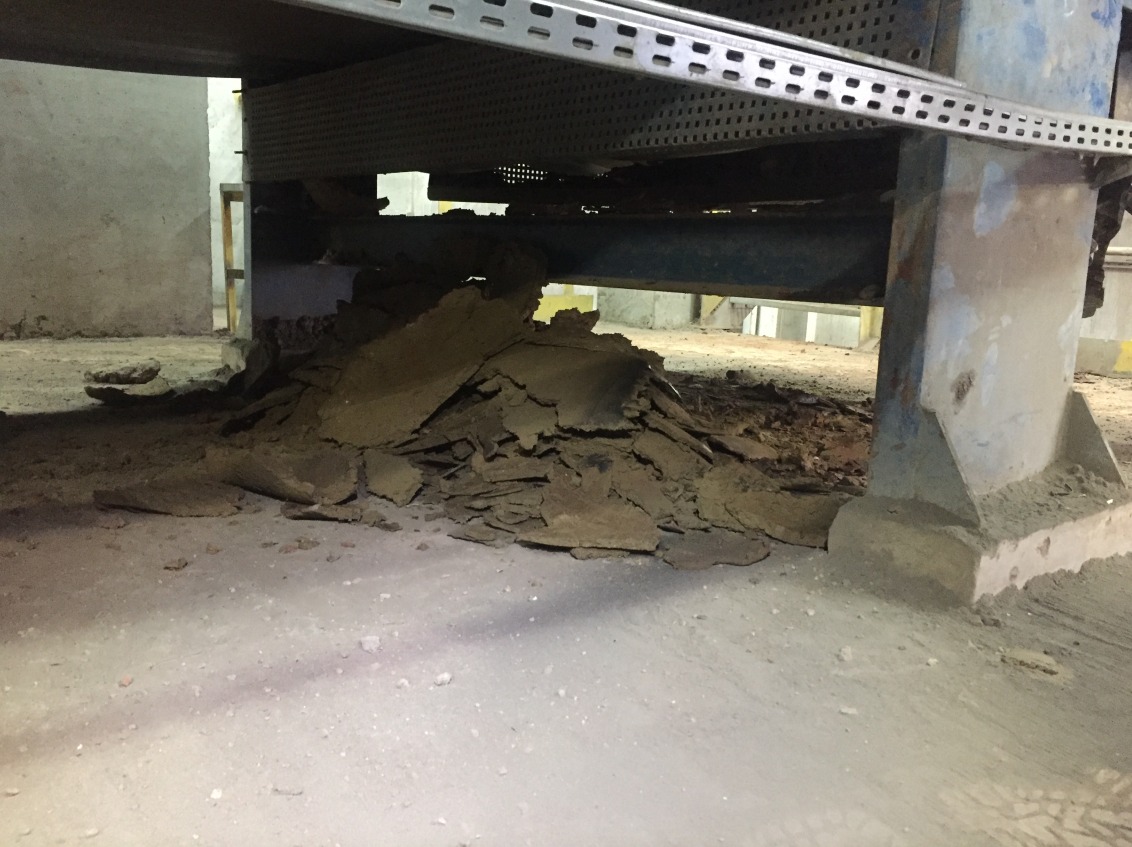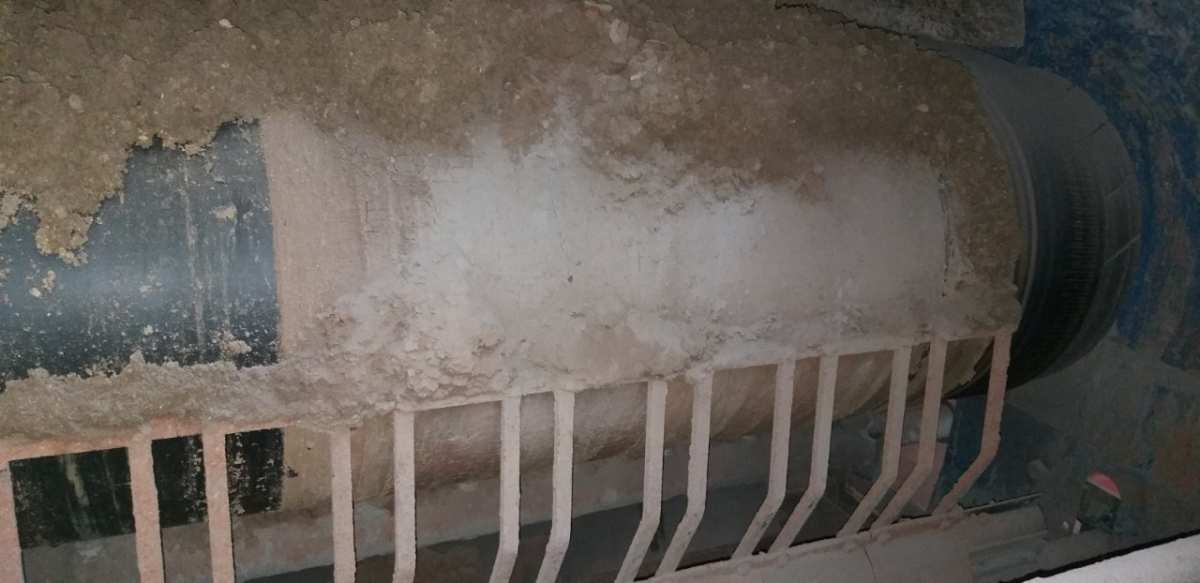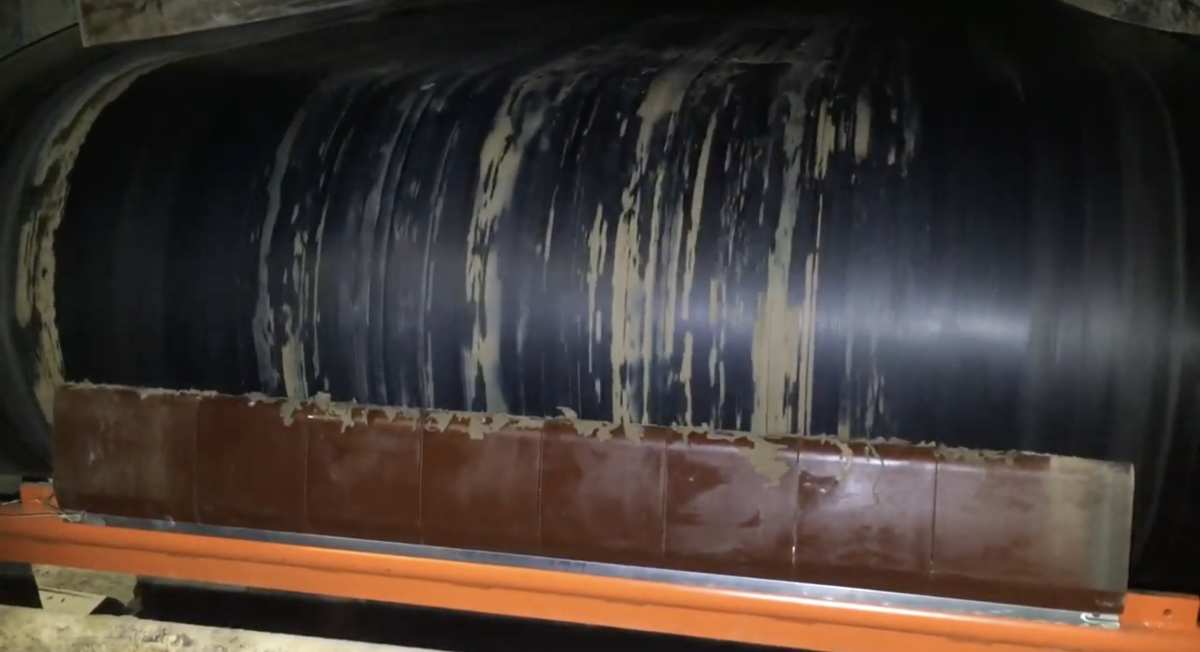Resources
| PDF - Printable Version of Case Study | Download |
Problem Solved!
We've been solving bulk material handling problems for companies around the word for over 70 years. Learn more about some of their experiences below.
| Products Used | QC1™ Cleaner HD |
|---|---|
| Product Types Used | Belt Cleaning Solutions , Primary Belt Cleaners |
| Industry | Cement |
| Customer | Podilsky Cement, Khmelnytsky, Ukraine |

Operators at Podilsky Cement, a CRH facility and one of the largest cement plants in Ukraine, noticed significant carryback dropping under one of the main raw material conveyors. Tacky clay and heavy pressure caused the belt to form an 8 mm (.31 in) layer of material that would cling to the belt and shed in sheets under the system. Along the entire length of the conveyor, spillage would pile up, and dust and fines would migrate to rolling components and fouling bearings, eventually causing them to seize. Cleaning and unscheduled downtime for repairs increased the cost of operation. Managers tried several brands of belt cleaners, but none were successful, so they contacted Martin Engineering for an affordable and lasting solution.

Martin Engineering Ukraine technicians visited the site and examined the system by performing Martin's stringent Walk The Belt™ procedure. They determined that the Martin® QC1™ Metal Tipped Cleaner would achieve a higher level of productivity and reduce costs associated with carryback and equipment replacement. Using Constant Angle Radial Pressure (CARP) technology with a Martin® Twist™ Tensioner, the blade maintains consistent contact with the belt and constant belt cleaning pressure as it wears. The blade is set in a series of cartridges that fit together into one seamless unit but can be replaced in a modular manner if uneven wear occurs.

Upon replacement, the belt was put through four full rotations and the blade cleared the belt of stuck-on clay. After operation for an extended period, operators noted a drastic reduction in spillage under the belt and almost no fouling of rolling components from dust and fines on the return side. This reduced the amount of cleaning required, as well as unscheduled downtime for expensive equipment replacement, reducing the cost of operation significantly. "We are very happy with the outcome and are budgeting to add another cleaner to our feeder conveyor," said one manager close to the project.
+91 20 66788270
Martin Engineering Company India Pvt. Ltd.
Plot 191, 192, 193, Vadu Khurd
Alandi-Markal Road, Phulgaon
Pune 412216, India
salesindia@martin-eng.com
+91 20 66788270